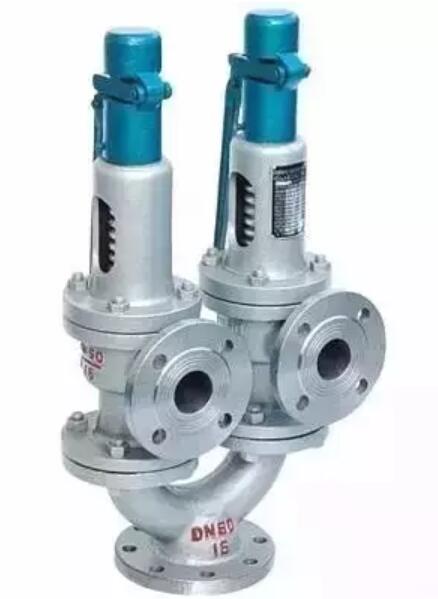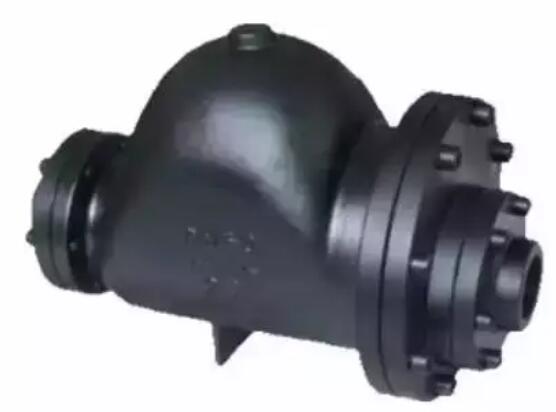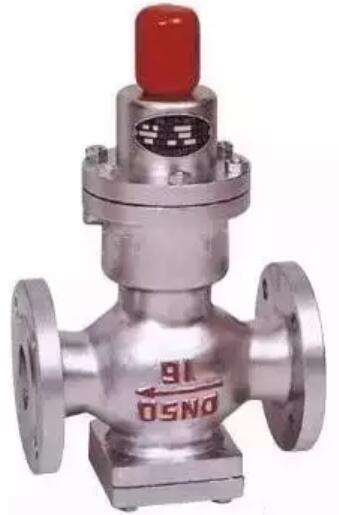- SITEMAP
- CONTACT US
- 8618267732328
News
Credibility ,the lifeblood of enterprise!
- Fittings
- Butt Welding Fittings
- Forged Fittings
- 180 Degree Elbows
- 90 Degree Elbows
- 60 Degree Elbows
- 45 Degree Elbows
- 30 Degree Elbows
- Equal Tee
- Reducing Tee
- Concentric Reducer
- Eccentric Reducer
- Lap Joint Stub End
- Outlets
- Cap
- Bend
- Cross
- Coupling
- Stainless Steel Lateral Tee
- Bellows Expansion Joints
- Flexible Metal Hose
- Non-Standard/Custom Fittings
- Bleed & Flushing Rings
- Types of Flanges
- Anchor Flanges
- Blind Flanges
- Expander Flanges
- High Hub Flanges
- Lap Joint Flanges
- Long Weld Neck Flanges
- Nipoflanges
- Orifice Flanges
- Plate Flanges
- Ring Type Joint Flanges
- Reducing Flanges
- Slip On Flanges
- Socket Weld Flanges
- Spectacle Blind Flanges
- Square Flanges
- Spades & Ring Spacers
- Threaded Flanges
- Welding Neck Flanges
How to correctly select special valves such as drain valve, safety valve and pressure reducing valve?
In the fluid pipeline system, the valve is the control element, whose main functions are opening and closing, throttling, regulating flow, isolating equipment and pipeline system, preventing medium backflow, regulating and discharging pressure, etc. There are many kinds of valves with complex varieties. The commonly used valves include gate valve, globe valve, throttle valve, plug valve, butterfly valve, ball valve, check valve, diaphragm valve, etc., and special valves include drain valve, safety valve and pressure reducing valve. With the rapid development of petrochemical industry, most of the media in petrochemical production units are toxic, flammable, explosive and corrosive. The operating conditions are complex and harsh, the operating temperature and pressure are high, and the start-up cycle is long. Once the valve fails, the medium leakage will be caused, which not only pollutes the environment, but also causes economic losses, and even leads to shutdown of the plant, Even caused a vicious accident. It is very important to select the right valve, especially the special valve in the pipeline design.
Safety valve and its selection method

What is safety valve?
Safety valve is an automatic valve for safety protection, which involves personal safety. It does not rely on any external force, but uses the force of the medium itself to discharge a certain amount of fluid to prevent the pressure in the system from exceeding the predetermined safety value. When the pressure is reduced to the specified value, the valve will be closed in time to protect the safe operation of equipment or pipeline.
The safety valve is designed under the most unfavorable factors. In case of the following situations, explosion accidents may occur due to fire, operation failure or water and power failure, etc., and the equipment or pipeline shall be set with safety valve (or other safety measures shall be taken):
- Outlet pipeline of positive displacement pump and compressor;
- On liquefied hydrocarbon pipeline where both ends are likely to be closed, resulting in pressure rise;
- The pipeline with combustible gas and flammable liquid expansion that may exceed the design pressure when heated;
- The design pressure is less than the pressure source of the pressure vessel and pipeline;
- Steam outlet pipe of condensate turbine;
- All pressure vessels need to be equipped with pressure relief facilities.
Classification of safety valves
Safety valves are classified according to different methods as follows:
- ① According to the different overall structure and loading mechanism, it can be divided into lever heavy hammer type (usually used for lower pressure, generally installed on equipment), spring yellow type and control type;
- ② According to the ratio of disc opening height to valve flow diameter, it can be divided into micro open type, middle open type and full open type;
- ④ According to whether there is back pressure balance mechanism, it can be divided into back pressure balance type and conventional type;
- ⑤ According to the principle of action, it can be divided into direct acting type and indirect acting type (including pilot type and those with power auxiliary device).
Description of safety valve selection
There are many types and types of safety valves. For different occasions, the following types of safety valves should be selected:
- ① When discharging gas or steam, full open safety valve shall be selected;
- ② When discharging liquid, the micro open safety valve is generally selected;
- ③ When discharging steam or air, safety valve with wrench can be selected;
- ④ The safety valve with heat sink should be selected for the gas safety valve with set pressure greater than 3Mpa and temperature higher than 235 ℃ to prevent direct erosion of spring by relief medium;
- ⑤ General flammable, explosive or toxic media should be closed type, and steam or inert gas can be non closed type;
- ⑥ The bellows safety valve should be selected for the discharge of highly toxic, strong corrosive and extremely dangerous media;
- ⑦ High back pressure occasion, should choose back pressure balance type or pilot valve control type safety valve.
Steam trap and its selection method

What is a steam trap?
The steam trap is a kind of automatic steam drainage device which does not drain the steam or steam from the condensation pipe at the same time. Because the trap has the function of blocking steam and draining water, it can make the steam heating equipment supply heat evenly and make full use of the latent heat of steam to prevent water hammer in the steam pipe. It is an energy-saving product which can ensure the temperature and heat required by various heating process equipment and can work normally.
Classification of steam trap
There are many kinds of traps with different performance. Steam trap should be able to "identify" the steam and condensate, in order to play the role of steam blocking and drainage. The identification of steam and condensate is based on three principles: density difference, temperature difference and phase change. According to the three principles, three types of traps are manufactured: mechanical type, thermal static type and thermal dynamic type.
- ① Mechanical type steam trap, also known as float type drain valve, is to use the density difference between condensate and steam, through the change of condensate level, float (spherical or barrel) lifting and driving the valve disc to open or close, so as to achieve the purpose of steam blocking and drainage. The mechanical type steam trap has small undercooling degree and is not affected by the working pressure and temperature changes. If there is water, it will be discharged. There is no water in the heating equipment, which can make the heating equipment achieve the best heat exchange efficiency. Mechanical drain valve has free floating ball type, lever floating ball type, floating bucket type, inverted bucket type, etc;
- ② Thermal static type steam trap is to use the temperature difference between steam and condensate to cause the change or expansion of temperature sensing element to drive the valve core to open and close the valve. The super cooling degree of the thermal static type steam trap is large, which is generally 15 to 40 degrees. It can use part of the sensible heat in the condensate. There is always high-temperature condensate in front of the valve, no steam leakage, and remarkable energy-saving effect. There are bellows type, steam pressure type or balance pressure type, bimetallic plate type and liquid expansion type;
- ③ According to the phase change principle, the thermal power type steam trap is based on the different thermodynamic principles of the flow rate and volume change when steam and condensate pass through, which makes the valve plate produce different pressure difference and drives the valve plate to open and close the valve. Because the working power of thermal power steam trap comes from steam, the waste of steam is large. Thermal power type steam trap is divided into disc type, pulse type, labyrinth type or microporous type.
Description of drain valve selection
In the process of steam transportation, steam water separation, heating, drying, heat preservation, heat tracing, disinfection, distillation, concentration, cooking, heat exchange, heating, air conditioning and other heating processes, in order to ensure the temperature and heat required by various equipment processes, and timely discharge condensate to prevent steam leakage, steam trap must be installed. For the selection of drain valve, high sensitivity, accurate steam blocking and drainage, no leakage of steam, can improve steam utilization rate, reliable working performance, high back pressure, long service life, convenient maintenance and other conditions.
Selection principle of steam trap:
- ① If the equipment is required to have the fastest heating speed, the heating temperature is strictly controlled, and condensate can not be accumulated in the heating equipment, the mechanical drain valve which can discharge saturated water should be selected;
- ② If the heating equipment has a large heating area, it is not required to heat as soon as possible, the heating temperature is not strict, and a certain amount of condensate can be required to accumulate, the thermal static type steam trap should be selected;
- ③ According to the drainage capacity of the equipment used, the safety factor must be considered when selecting the drain valve;
- ④ The drain valve is based on the pressure difference to determine the displacement.
The specific selection instructions are as follows:
- ① The maximum back pressure of mechanical steam trap is 80% and the working quality is high. It is the most ideal drain valve for production process heating equipment. The sensitivity of valve with small gate diameter is higher than that of valve with gate diameter. In addition to the inverted bucket drain valve can remove a small amount of cold and hot air, this type of valve can not exclude air. The free floating ball type has the advantages of simple structure, high sensitivity, and can discharge saturated water. It has poor water hammer resistance and dirt resistance. It is suitable for large diameter and large displacement, but its manufacturing process is complex.
- ② The thermal static type steam trap can be installed on the upper part of steam consuming equipment and used as exhaust valve only. The liquid expansion type is suitable for the heat tracing pipeline with low heat tracing temperature and heating pipeline. The steam pressure type or balance pressure type has simple structure, sensitive action, can continuously drain and exhaust air, has good performance and small air leakage, but it has poor water hammer and dirt resistance, and has a wide application range. It can be used as the exhaust valve of steam system. Bellows type is widely used for heating system drainage, and can also be used as exhaust valve of steam system. The bimetallic chip has low sensitivity, continuous drainage, good drainage performance, large and adjustable undercooling. It can be applied from low pressure to high pressure, and the maximum service temperature can reach 550 ℃. It has strong resistance to dirt and water hammer.
- ③ The thermal power type steam trap has high sensitivity, small opening and closing parts, small inertia and fast switching speed. Disc type steam trap is suitable for high temperature and high pressure steam pipeline, dryer, heater and superheated steam equipment. The back pressure of pulse type steam trap is low, which is suitable for siphon drainage of rotary drying drum, and can remove a certain amount of cold and hot air. Labyrinth or microporous trap has simple structure and can continuously drain and exhaust air. Microporous type is suitable for small displacement, labyrinth type is suitable for extra large displacement.
Installation requirements of steam trap
The thermal power type steam trap should be installed in the horizontal pipeline; the floating ball type drain valve must be installed horizontally, and the necessary anti freezing measures should be taken for those arranged outdoors; the bimetallic trap can be installed horizontally or vertically; the pulse type steam trap is generally installed on the horizontal pipeline with the valve cover upward; the inverted bucket type steam trap should be installed horizontally and not inclined; when installing the steam trap, the main body should refer to The flow direction arrow indicated must be consistent with the direction of condensate flow in the pipeline, otherwise the trap will lose its function.
Pressure reducing valve and its selection method

What is pressure reducing valve?
The pressure reducing valve is a kind of valve that can reduce the inlet pressure to a certain outlet pressure by throttling the opening and closing parts, and can use its own medium energy to keep the outlet pressure basically unchanged when the inlet pressure and flow rate change. Its function is to change the position of valve disc by means of sensitive elements, such as diaphragm and spring, so as to reduce the medium pressure and achieve the purpose of decompression. In general, the outlet pressure of the pressure reducing valve should be less than 0.5 times of the inlet pressure. The fluctuation of inlet pressure of the pressure reducing valve should be controlled at 80% ~ 105% of the given value of the inlet pressure. If the range is exceeded, the performance of the pressure reducing valve in the early stage will be affected. For the convenience of operation, adjustment and maintenance, the pressure reducing valve should be installed on the horizontal pipeline.
Classification of pressure reducing valve
Pressure reducing valve can be divided into bellows type (direct acting) pressure reducing valve, piston type pressure reducing valve and membrane type pressure reducing valve.
- ① Bellows type (direct acting) pressure reducing valve. Simplest pressure reducing valve, direct acting pressure reducing valve, with flat diaphragm or bellows. Independent structure, no need to install external sensing line downstream. It is the smallest and most economical one among the three pressure reducing valves, specially designed for medium and low flow. The accuracy of the direct acting pressure reducing valve is usually (+ 10% ~ - 10%) of the downstream set point;
- ② Piston type pressure reducing valve. This type of pressure reducing valve has two kinds of valves, pilot valve and main valve. The design of pilot valve is similar to that of direct acting pressure reducing valve. The exhaust pressure from the pilot valve acts on the piston to open the main valve. If the main valve is too large to be opened directly, this design will use the population pressure to open the main valve. As a result, this type of pressure relief valve has higher capacity and accuracy (+ 5% ~ - 5%) than direct acting pressure reducing valve at the same pipe size. Similar to the direct acting pressure reducing valve, the pressure reducing valve can sense the pressure inside without installing a sensing line outside;
- ③ Diaphragm pressure reducing valve. In this type of pressure reducing valve, the double diaphragm replaces the piston in the inner guide pressure reducing valve. This increased diaphragm area opens a larger main valve and, at the same pipe size, has a larger capacity than an internal guide piston pressure relief valve. In addition, the diaphragm is more sensitive to pressure changes, and the accuracy can reach (+ 1% ~ - 1%). The higher accuracy is due to the positioning of the downstream sensing line (outside the valve), where there is less gas or liquid turbulence. The pressure reducing valve is very flexible and can use different types of pilot valves, such as pressure valve, temperature valve and air loading valve.
Selection of pressure reducing valve
The pressure reducing valve is widely used in the equipment and pipeline of steam, compressed air, industrial gas, water, oil and other liquid media
- ① Bellows direct acting pressure reducing valve is suitable for low pressure, medium and small caliber steam, air and other media;
- ② Membrane direct acting pressure reducing valve is suitable for medium and low pressure, medium and small caliber steam or water;
- ③ The pilot piston type pressure reducing valve is suitable for steam, air and water media with various pressures, calibres and temperatures. If it is made of stainless acid resistant steel, it can be used in various corrosive media;
- ④ When the working temperature of medium is high, the piston type pressure reducing valve is generally selected;
- ⑤ When the sensitivity requirement is high, the spring diaphragm pressure reducing valve can be selected;
- ⑥ When the medium is air or water (liquid), direct acting membrane pressure reducing valve or pilot diaphragm pressure reducing valve is generally selected.
Conclusion
In the pipeline system of petroleum, chemical industry and other industries, there are more and more special valves such as safety valve, drain valve and pressure relief valve with energy saving function. Valve in operation has a very close relationship with the overall efficiency of the enterprise. Although the valve is small, it has a very important causal relationship with the survival and development of the enterprise. For the safety production and benefit of the enterprise, the designers and enterprises must use the valve in an all-round and scientific way. Reasonable selection of the valve can reduce the construction cost of the device and ensure the safe operation of the production.
Source: China Valves Manufacturer – Yaang Pipe Industry Co., Limited (www.yaang.com)

Tel No:+86-18267732328 / Email:[email protected]
Address:Longwan District, Wenzhou, Zhejiang Province, China.
Copyright Notice © www.yaang.com Yaang Pipe Industry Co., Limited All rights reserved.
Yaang Pipe Industry Co., Ltd. is an international supplier of piping solutions for flange, butt welding fittings, socket welding fittings and threaded fittings. Our products are widely used in different industrial fields, including oil and gas, chemical industry, petrochemical industry, power plant, pulp and paper industry, environmental and water conservancy engineering, engineering projects, etc.





